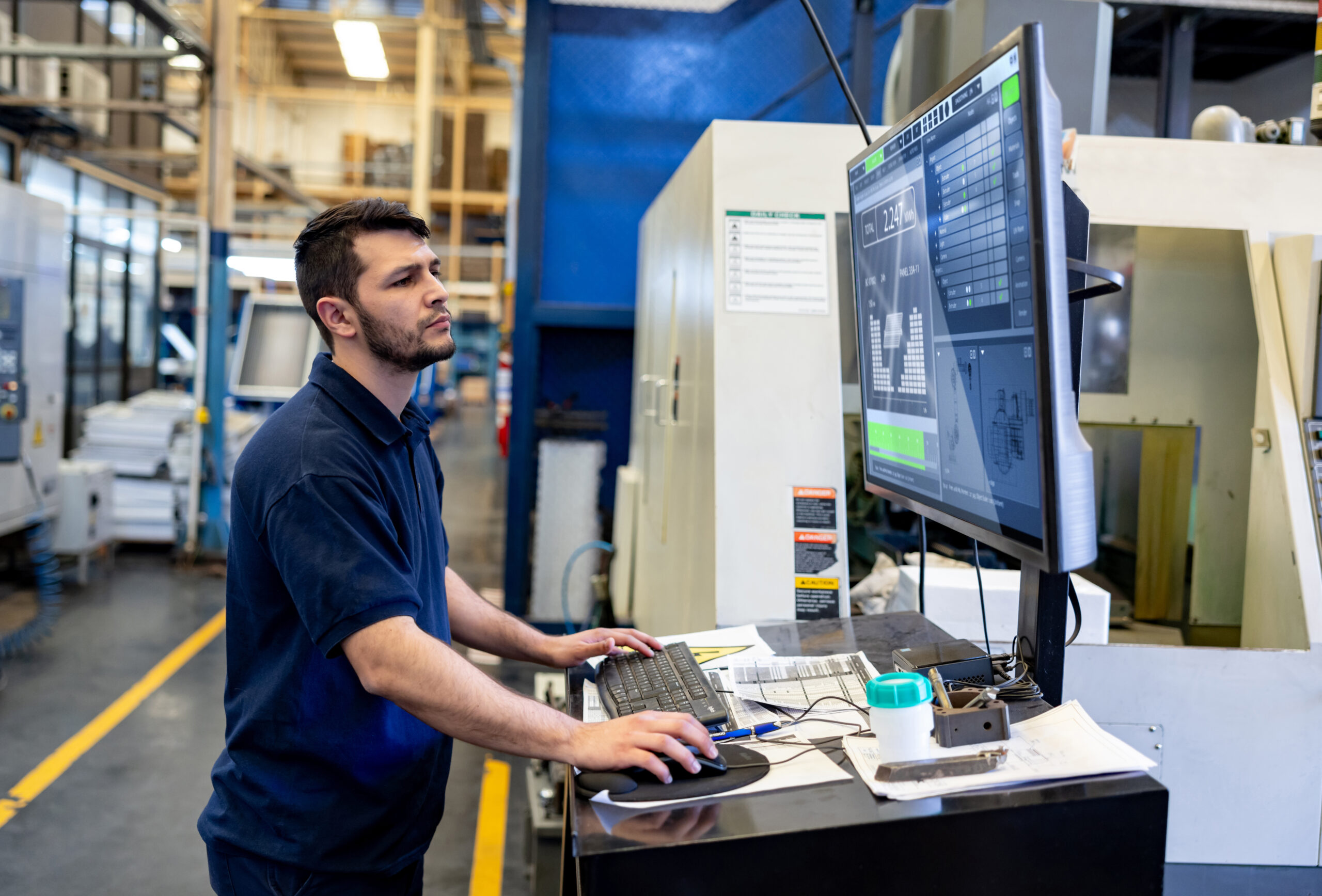
What To Expect in 2023?
Manufacturers have faced several challenges in recent years, and it appears that 2023 will be no different. This year will bring a number of problems for manufacturers, but there are also exciting new possibilities, opportunities, and technologies available to help them transform their businesses for the better.
Below are our predictions for the top 10 trends that we think will have a major impact on the industry in 2023.
1. (Economic) Uncertainty
Uncertainty continues to be the name of the game in 2023. The economy is on shaky ground with persistent inflation, rising interest rates, and what appears to be an inevitable global recession. Add into the mix continuing supply chain issues, global and political instability, and the ongoing war in Ukraine — and 2023 is shaping up to be a year full of challenges.
According to the National Association of Manufacturers (NAM), over 62% of manufacturing industry leaders believe the U.S. economy will slip into a recession in 2023. Though challenges — both economic and beyond — will put pressure on the industry, manufacturers are nothing if not resilient. Over the past years, manufacturers have learned to become adept at dealing with uncertainty and finding solutions to problems.
Even with the current economic outlook, manufacturers are planning to forge ahead — 63% of manufacturers, according to NAM, see solid demand for their company’s products, and 65% of manufacturers plan to spend on new equipment and make technological investments. The majority of manufacturers also plan on investing in upskilling and training their existing workforce, hiring new employees, and investing in research and development.
2. Labor Issues
Labor issues are certainly not new to the industry, but they will continue to put pressure on manufacturers in 2023.
The Great Resignation had an outsize effect on the manufacturing industry as manufacturers saw a 60% increase in resignations compared to pre-pandemic levels. Even with the economy on shaky ground, industry insiders expect more resignations and job swapping in 2023 as employees seek more favorable working conditions. The industry also suffers from an age problem. According to the Manufacturing Institute, almost 25% of industry workers are 55 or over and nearing retirement age.
Attracting new and younger talent will be a key issue for manufacturing companies in 2023. Manufacturers are meeting this challenge by rapidly implementing new programs and changing how they operate to attract employees. Initiatives range from better compensation and flexible hours to career advancement opportunities and workplace wellness programs. The ultimate objective is to not only attract fresh talent to the industry but to retain current workers by assisting them in achieving a healthier work-life balance and better work environments.
3. IIoT
The Industrial Internet of Things, or IIoT, will continue to be a dominant force in the manufacturing industry in 2023. The IIoT is the network of physical items, or ‘things,’ within an industrial setting equipped with sensors, software, and other technologies that communicate and exchange data with other devices and systems through the internet.
Over the last four to five years, manufacturers have invested heavily in IIoT technology, which will only continue to increase in 2023 and beyond as sensor technology becomes cheaper and more accessible.
IIoT technology is an important innovation within the industry, as it allows manufacturers to integrate complex systems, track equipment performance, and monitor production — including production on specific equipment, specific unit operations, and specific unit lines — in real-time to identify hidden inefficiencies and improve operational performance. Manufacturers will be looking to increase their reliance on this technology in 2023 and beyond to shore up efficiencies and improve profitability in uncertain economic times.
4. Advanced Digital Technologies
In addition to the IIoT, new and better digital technologies, including 5G, edge computing, and digital twins, will start to impact the manufacturing industry in 2023.
5G, or the fifth generation of mobile data network technology, will allow manufacturers to more easily connect their IIoT technology and create even smarter and more efficient shops.
Edge computing (as opposed to cloud computing) will enable manufacturers to better deploy automation across their shop floors — and throughout their supply chain activities — by using enhanced machine-to-machine communication that is closer to the source.
Digital twin technology is a relatively new IIoT innovation that creates a near-exact replica of a physical piece of machinery or specific component in a virtual environment. For instance, in a manufacturing environment, a digital twin may be used to mimic the dimensions of a new product or make a digital replica of a piece of machinery on a shop floor to observe how the equipment functions under various circumstances.
Manufacturers who are already using digital twins are seeing big increases in efficiency. For example, Boeing increased the first-time quality of parts by 40% by using digital twins.
5. Predictive Resolution
Predictive maintenance — using IIoT technology and sensor data to detect failure patterns in machinery and components, allowing for better equipment maintenance — has been around for a few years in the manufacturing industry.
But manufacturers are starting to take this further, and 2023 will usher in a new era of predictive maintenance. Instead of just using sensor technology to help identify issues and create maintenance schedules, manufacturers are taking advantage of advances in computing technology to move to predictive resolution. This allows manufactures to not only identify performance and maintenance issues but to take it a step further and use data to give technicians information on how to solve these problems with greater assurance.
6. Product-as-a-Service
We’re all familiar with the idea of SaaS (software-as-a-service), but there is a move afoot in the manufacturing industry toward PaaS or product-as-a-service.
In the past, a manufacturer’s relationship with its customers was often brief and sporadic. A customer would buy a piece of equipment, complete the sales process, finalize the installation, and then only communicate with the manufacturer again when they required repairs or were considering purchasing additional equipment. Today’s consumers are moving away from this model and prefer to pay only for what they actually need on a continuing basis rather than making a one-time purchase. They also prefer to have regular contact with their service or product provider.
PaaS allows manufacturers to lease equipment to clients and/or to provide a variety of subscription-based value-added services, rather than selling them a product outright.
Customers benefit from this arrangement because they only pay for what they require, receive more assistance from the original equipment manufacturer, and have access to a wider selection of value-added services to increase operational efficiencies. Manufacturers gain even more by moving towards a subscription model (rather than handling several one-time transactions) by creating a recurring and consistent revenue stream.
7. Big Data is Bigger Than Ever
Big Data is another one of those buzzwords that have been floating around the industry over the last few years — but is again poised to have a major impact on the industry in 2023.
The continued development and implementation of IIoT technologies, an increasing focus on predictive resolution, and the industry-wide shift toward PaaS are making Big Data more important now than ever before. Thanks to sensor technology and the ability to acquire data from an ever-increasing variety of sources, combined with ever-expanding analytics capabilities, manufacturers can now collect and analyze data in ways that provide them with a comprehensive picture of their business.
This allows manufacturers to make more data-driven decisions across their business in terms of sourcing, procurement, production, fulfillment, cost reduction, and more. Better, smarter, and more data-driven decision-making allows companies to increase operational efficiencies and improve profit margins — making it easier for manufacturers to thrive in difficult times. Or, if things go awry, manufacturers can also use Big Data to better understand what went wrong and adjust their strategy going forward. In that sense, 2023 will be about going beyond Big Data visibility, to focusing on its meaning and how to reap its rewards.
8. A New Approach to ERPs
ERPs have been the foundation of manufacturing businesses for decades, and they aren’t going anywhere in 2023. ERPs are a mainstay in the industry because they allow manufacturers to streamline processes, improve efficiencies, monitor operations, and reduce costs — as well as are a great source of accurate, real-time information on manufacturing operations.
However, due to the COVID-19 pandemic and other major industry disruptions, manufacturers have started to take a cold hard look at their operations and are re-evaluating their legacy systems. This doesn’t mean that manufacturers are ditching their ERPs; the opposite is, in fact, true. Manufacturers will continue to spend and invest heavily in ERPs, with the ERP market going through a phase of rapid expansion: The market for ERPs is expected to expand at a growth rate of 11.0% from 2023 to 2030.
But, manufacturers are looking for smarter, better, and more tailored systems that can handle their particular needs and are built specifically for their niche. In 2023, expect to see a shift away from heavy customization of generic ERPs, which can contribute to unnecessary complexity for a manufacturer’s operations, and a turn towards industry-specific ERPs built to meet the specific business needs of manufacturers.
9. More Automation and Robotics
With labor issues and other pressures on manufacturers in 2023, expect to see even further growth in automation and robotics.
AI has enabled machines to perform an increasing number of tasks that were previously only done by people. Manufacturers can alleviate labor shortages and benefit from automation in a variety of ways, including through increased production, improved accuracy, and lower costs.
The increasing reliance on robotics is one of the main factors that is facilitating greater automation. However, it’s important to note that not all robots exist to replace human labor; rather, many of them exist to improve the job of humans. Robotic exoskeletons, for instance, enable workers on the assembly line to lift heavier components without risking their safety, and cobots, or collaborative, intelligent robots, are created especially to work with people.
Cobots and robots can boost production efficiency for manufacturers. For example, to address issues with lagging production times — largely due to labor shortages — Nissan implemented robotic arms at motor production sites in Japan. Nissan also used cobots to assist workers with other jobs, like installing engine intakes, to improve operational efficiencies.
10. Future Proofing
If the past few years have taught us anything, there is nothing we can do but expect the unexpected. Unanticipated events and unforeseen circumstances will likely continue to interfere with the manufacturing industry in 2023 and beyond, impacting productivity and throwing manufacturers for a loop. Over the past couple of years, the fallout from the pandemic has encouraged manufacturers to build more resiliency into their businesses to ensure they are able to take on whatever the world throws at them.
We expect to see manufacturers in 2023 continue to invest in technologies — everything from ERPs to cutting-edge robotics — to further drive resiliency and future-proof their businesses. There will be steady growth in the adoption of innovative tools by manufacturers of all sizes, driven by the need to optimize operations and continue to meet customer demands.
____________________________________________
While the cards may appear to be somewhat stacked against manufacturers, we believe 2023 will be a year of innovation within the manufacturing industry. Manufacturers have pulled through some of the toughest times we have faced in the past — and will continue to do so in 2023 and beyond.
Get your eBook Scared to implement a new ERP?
"*" indicates required fields



